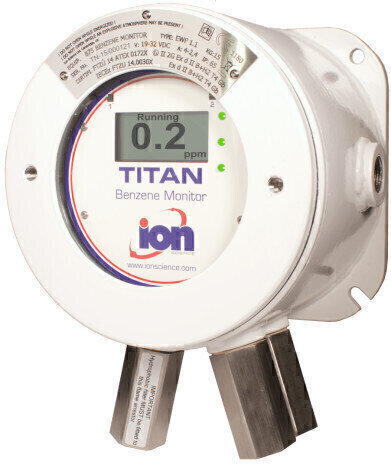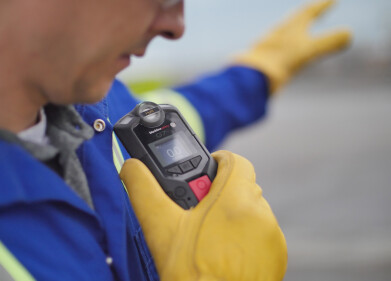Personal Gas Monitor
Detecting Benzene in Hazardous Areas
Nov 16 2016
Benzene is an industrial chemical commonly found throughout the petrochemical industry. It is extremely hazardous and a recognised human carcinogen so it’s essential that sub parts per million (ppm) benzene concentrations can be measured rapidly and accurately in the presence of the hundreds of aromatic and aliphatic compounds encountered in the industry.
Traditionally it has not been possible to collect accurate measurements due to a lack of available technology. However, Ion Science offers a range of high performance personal, handheld and fixed benzene specific detectors for use in hazardous applications across the world.
For data critical zones, Titan is the world’s only fixed, continuous benzene specific monitor for detection of ambient benzene in petrochemical and refinery applications where traditional methods suffer cross interference. Providing the ultimate real-time protection of workforce, environment and plant, Titan is capable of detecting benzene levels down to 0.1 ppm and up to 20ppm.
When a sample is taken, the benzene component is chemically filtered using robust separation technology which eliminates false negatives and positives.
With a robust and reliable design, the Ion Science Tiger handheld PID provides a dynamic detection of one ppb to 20,000 ppm, offering the widest measurement range on the market. It is easy to set up and provides advanced volatile organic compound (VOC) detection with advanced software features. It has a fast response time of just two seconds and can be connected directly to a PC via the USB offering rapid data download capabilities.
The versatile Tiger Select model has two mode operation for the accurate detection of benzene and total aromatic compounds (TACs). Utilising the high output Ion Science 10.0eV PID, a reading for TACs is seen immediately on start-up.
Should TACs be detected, a benzene pre-filter tube can be easily attached to allow rapid detection and selective measurement of benzene.
Throughout the measurement process, Tiger Select continues to display real time data, keeping the worker safe. Benzene concentrations are displayed down to ppb levels.
As the world’s smallest, lightest and most sensitive gas detector, Ion Science’s CubTAC personal PID features audible, vibrating and flashing LED alarms designed to give workers an early warning of exposure to hazardous gases, including benzene, before they reach harmful levels. CubTAC also uses the 10.0ev PID to give a reliable aromatic hydrocarbon concentration.
The Titan, CubTAC and Tiger Select all incorporate Ion Science’s next generation MiniPID 2 sensor which offers increased temperature stability, greater sensor-to-sensor consistency and more repeatable performance at low temperatures.
Ion Science MiniPID 2 sensors include patented Fence Electrode Technology for industry leading humidity resistant performance whilst ensuring fast and accurate detection of VOC gases. With its anti-contamination design, drift is minimised by protecting the sensor from moisture, dust and aerosols. The MiniPID 2 also offers an innovative self-diagnostic feature that indicates whether the lamp is failing to illuminate or the electrode stack is contaminated.
Digital Edition
PIN 25.5 Oct/Nov 2024
November 2024
Analytical Instrumentation - Picturing Viscosity – How Can a Viscometer or a Rheometer Benefit You? - Sustainable Grease Formulations: Evaluating Key Performance Parameters and Testing Method...
View all digital editions
Events
Dec 03 2024 Dusseldorf, Germany
Dec 08 2024 Anaheim, CA, USA
Turkey & Black Sea Oil and Gas
Dec 11 2024 Istanbul, Turkey
Dec 19 2024 Aurangabad, India
Jan 20 2025 San Diego, CA, USA





















